OTHER RESOURCES
A very readable volume about the Grand Central Air Terminal is this book:
Underwood, John. 1984. Madcaps, Millionaires and 'Mose'. Heritage Press, Glendale, CA. 144pp.
---o0o---
YOU CAN HELP
I'm looking for information and photographs of Earhart and her airplane to include on this page. If you have some you'd like to share, please click this FORM to contact me.
---o0o---
SPONSORED LINKS
HELP KEEP THESE WEB SITES ONLINE
FOR YOUR CONVENIENCE
You may NOW donate via PAYPAL by clicking the "Donate" icon below and using your credit card. You may use your card or your PAYPAL account. You are not required to have a PAYPAL account to donate.
When your donation clears the PAYPAL system, a certified receipt from Delta Mike Airfield, Inc. will be emailed to you for your tax purposes.
---o0o---
AMELIA EARHART
Amelia Earhart (full name: Mrs. Amelia Mary Earhart Putnam) was born July 24, 1897 in Atchison, KS. He came of age during the yeasty Golden Age of Aviation. Another way of saying that is she was in the right place at the right time vis a vis the Wright Brothers' first flight. Not only was aviation a novelty, but female aviators cut against the socio-cultural sense of gender capabilities at the time. In 2004 I wrote an article that appeared in Sport Aviation magazine. Here's the reference with a link that will download the article for you with all the pictures: “Women of the Golden Age: Their Airplanes and Their Spirits Still Live!” Sport Aviation. 53:3, March 2004. pp. 48-56. (1.58MB PDF).
In the summary of that article, I said the following.
"The New York Times published 1,265 articles on female aviators during that period, which equates to about three articles per week. They did get press coverage, and that is just one newspaper. Not surprisingly, writings about women aviators in the popular press of the 1920s and 1930s are foreign by today’s standards. “Girl fliers”, “aviatrix” and other patronizing, gender-biased phrases and attitudes are rightly out of place in today’s fashion. Some articles connected the pilots to their husbands, or even mechanics, as if anchoring them to a male image might increase their credibility!
|
In the culture of the U.S. at the time, women who flew were popular with the media. So Earhart being one of them became another one of those pilots, like Charles Lindbergh, Howard Hughes and Jimmy Doolittle, who have left behind such a reputation as to at least be familiar to most people of the 20th century who were generally warm and alive. After this admittedly awkward sentence, what is there to say about Earhart, or for that matter Lindbergh, Hughes or Doolittle, that hasn't been said before?
That's the challenge I tried to pick up in the Web pages I researched, developed and wrote for them at the links above. Even Amelia Earhart, whose "full" biography is at her link over on the Davis-Monthan Airfield Web site, has some new information there. Her page there remains unfinished as I search for more information that isn't commonplace.
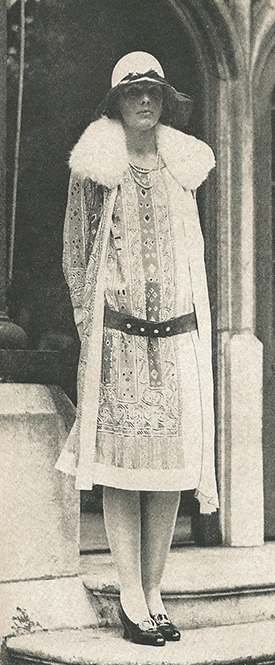 |
So that brings us here. Amelia Earhart landed twice at the Grand Central Air Terminal (GCAT). Both times she carried one unidentified passenger in the Pitcairn PCA-2 autogiro NC10780. This was the brand-new PCA-2 that Earhart flew cross-country in a record attempt to be the first person to fly an autogiro across the United States. However, Register pilot John Miller earned the record in NC10781 a few days earlier than Earhart's landing at GCAT. Her autogiro was soon to be owned (bill of sale 7/11/32) by the Beech-Nut Packing Company and was painted with the Beech-Nut chewing gum logo.
The dates of her landings were June 6th and June 9, 1931. She had just flown her aircraft across the United States and was soon to fly it back east. We know this, because on June 10th she landed at 10:00AM at the Davis-Monthan Airfield eastbound. She cited her destination as "Points east...." Please direct your browser to the link for her autogiro, above, for more information.
Despite her global appeal, in perspective, actually, her impact on our Web sites is relatively low. Of about 200 landings by female pilots across the six airfield Registers that are the focus of these Web sites, Amelia contributed six, or 3% of landings by female pilots (three landings at Tucson, two at GCAT and one at Parks Airport).
You might think that, with her reputation, she would have shown up for a lot more visits, with the obligatory entourage of paparazzi and groupies. She did not, which should make us think: Why? Other female aviators appeared more times in the Registers. Other female aviators flew higher, faster and lived more interesting lives than Earhart. Other female pilots were, frankly, much better pilots than Earhart. Why? The answer, I think, was marketing and the media of the day.
George Palmer Putnam was a publisher in his namesake company, G.P. Putnam's Sons. G.P. Putnam's published in 1928, on the wake of LIndbergh's trans-Atlantic flight, Amelia's book "20 HRS., 40 MIN." Photograph, left, is from that book.
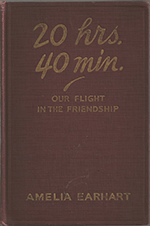 |
"20 HRS., 40 MIN." was her story of her June 17-18, 1928 flight across the Atlantic as a passenger with Register pilot Wilmer Stultz and his copilot/flight mechanic Louis "Slim" Gordon (1901-1964). It was Putnam who arranged for Earhart to accompany the flight. She had nothing to do with piloting or navigating their airplane; she identified herself as "baggage." Book cover, right, from your Webmaster's library (WL).
Nevertheless, she was the first woman pilot to ever cross the Atlantic Ocean by airplane. And the media billed her in a bigger role than she had. The New York Evening Journal of July 2, 1929 (reporting a year after the flight) cites Stultz as the, "...co-pilot for Amelia Earhart...." A Paramount News film describing the departure of the flight on July 8, 1929 [sic, it was June 17, 1928] describes her as the "girl co-pilot." Fascinating. Her book sold like hotcakes. It was the start of her reputation.
Coincident with this flight, there is a U.S. Immigration form at ancestry.com that places Earhart on the S.S. President Roosevelt departing Southampton, England June 28, 1928 and arriving at New York on July 6th. This was her return voyage after the flight with Stultz and Gordon. Her address was listed as 80 Federal St., Boston, MA. From 1925-1928 Earhart worked as a social worker at Denison House in Boston. The same Immigration record shows Stultz and Gordon were aboard the same ship.
So Putnam recognized a good thing when he saw it. He divorced his wife and married Earhart on February 7, 1931. From all accounts theirs was a marriage of convenience. Even the body language visible in photos and period films of Earhart and Putnam is not convivial. Further, Earhart was explicit in her expectations of Putnam, as evidenced by the prenuptial letter Earhart delivered to him just before they were wed, below.
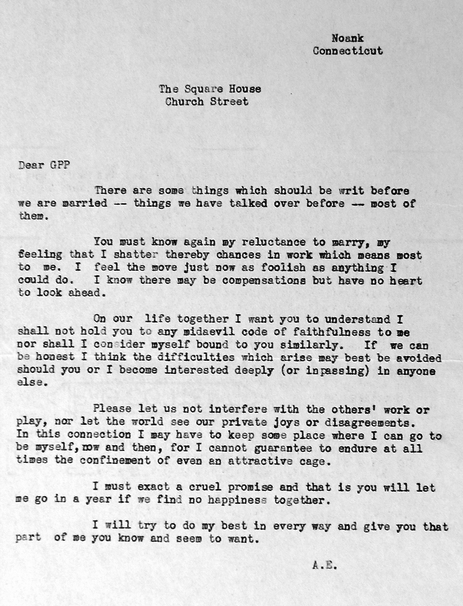 |
But, it was Putnam's shrewd use of marketing through radio, newspapers, press releases, interviews, articles and photo opportunities, and commercial contracts for lectures, books and other endeavors that promoted Earhart and her reputation as an invincible and skilled aviator. And she funded her flight activities. And along the way she enriched both of them.
In her day, as she increased in her visibility and popularity, she was an irresistable magazine cover girl, an editor of a popular women's magazine, enjoyed income from named products such as clothing lines and luggage (Amelia Earhart Luggage is still manufactured today), and was the subject of numerous books, articles and films. She was paid by sponsors to claim she used and enjoyed their products. One sponsor was a cigarette company. She didn't smoke.
She took a position with Purdue University in 1936 and the University purchased for her a twin-engined Lockheed Model 10 NC10620 to be used as a "Flying Laboratory," a purely scientific endeavor. A noted military pilot, major Al Williams (1896-1958; not a Register pilot) had this to say about her aviation "racket" in the March 31, 1937 issue of the Cleveland Press, "Amelia Earhart's 'Flying Laboratory' is the latest and most distressing racket that has been given to a trusting and enthusiastic public .... fat lecture contracts, the magazine and book rights ... it's high time that [they] put an end to aviations biggest racket -- 'Purely Scientific' ballyhoo." Earhart responded cooly, "I'm glad it wasn't a woman who wrote it."
 |
Since July 2, 1937 when she became missing, and January, 1938 when she was finally declared dead, few human beings have had such a lasting reputation all because they disappeared. Husband Putnam quickly published as a book her notes, journals and letters sent back home during her final flight. Her posthumous book was titled, Last Flight, published, with an introduction by her husband, in late 1937. Book cover, left, from your Webmaster's library (WL). Putnam wrote a biography of Earhart, Soaring Wings; A Biography of Amelia Earhart published in 1939.
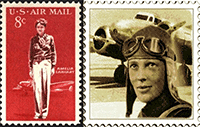 |
Today she has an "official website." People still trade in artifacts related to her: letters, signed books, postal cachets, photographs, tokens, framed and unframed news articles and documents, autographs, airplane fragments, postage stamps (right), vintage pens and pencils, the list goes on. Numerous museums own and archive or display the rarest of these artifacts. Her birth home is a national historic landmark and museum.
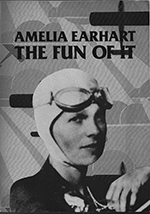 |
Her minor presence in our airfield Registers notwithstanding, she did arrive on the ground with some interesting aircraft. Her Pitcairn autogiro, NC10780, linked above, was a beautiful and functional machine that she flew across the United States in 1931. As was her Lockheed Vega NC7952, with which she set two records. On May 21, 1932 she became the first woman to fly across the Atlantic Ocean using NC7952. She wrote a book in anticipation of that flight, The Fun of It, that was published in 1932 (book cover, left). A few months later, on August 25, 1932 she flew it from Los Angeles, CA to Newark, NJ in 19 hours and 5 minutes. In 1935, she flew her Lockheed from Honolulu to Oakland, CA, the first woman to do so. She then flew from Los Angeles to Mexico City. Today, NC7952, painted red as it was when Earhart flew it, lives in the Smithsonian National Air & Space Museum.
Her final mission came in 1937. Before she left the U.S. she was captured on film on the ground at Oakland, CA by Register pilot West Moreau. A motion picture of her visit and departure is at the link, taken by Moreau. Please direct your browser to Moreau's Web page and click on the link there to view the film.
A pretty good Web summary of the flight, to the point where she went missing, is at the link. Scroll down the page a bit and you will find a table logging origins, destinations and distances of all her intermediate flights. Reams have been written about her preparations, flight execution and demise. Were she and her navigator Fred Noonan really prepared? Why did she leave some communication equipment behind? Probably more reams and other media have been dedicated to conspiracy theories. Was she spying on Japan? Was she Tokyo Rose? Did she land on this island or that?
Below is Howland Island on an extremely clear day. It is what she was aiming for. The nice landing strip was not on it back in 1937. Fog, haze, thicker cloud cover that would cast shadows on the water that look like islands, time of day, all these factors would make it extremely difficult to find this tiny island without astute navigation.
Couple that with the lack of correct navigation and communication equipment and the setup is for disaster. In contrast, her flight with Stultz, her 1932 solo flight across the Atlantic, or her solo flight across the Pacific from Honolulu to Oakland with NC7952, as a matter of fact, were no-brainers: Takeoff, set your compass generally to east and you will hit land on the other side before too many miles go underneath. Not so with Howland Island. Miss it by even ten miles either side on a hazy day and you are headed into the abyss of the South Pacific Ocean. She did, and she was, and she took Noonan with her. Their airplane was the Lockheed Model 10 NC10620.
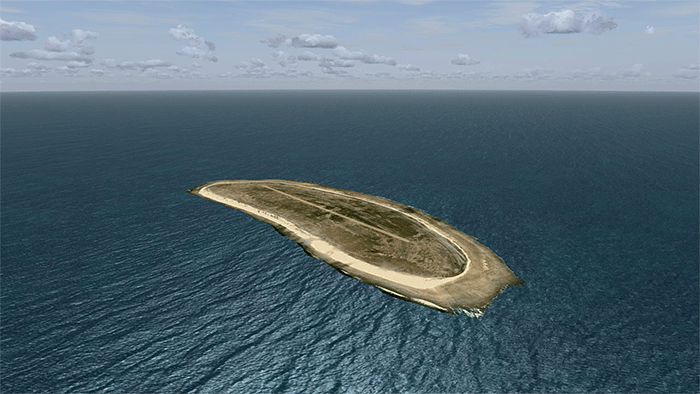 |
By comparison, if you consider the preparations and equipment installed and used by the ultimate winners of the Oakland to Honolulu Dole Race a decade earlier, there is no comparison to the skill and accuracy with which that flight was made. And that was in 1927, from Oakland to Honolulu with little margin for navigational error. And the distance was about the same as Earhart's Howland Island leg (2,300 miles, plus or minus).
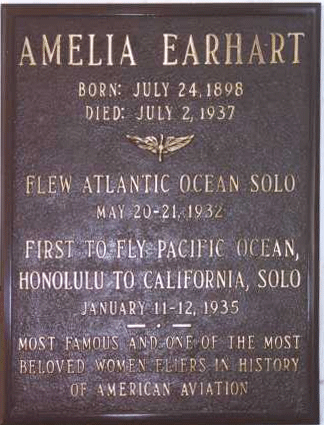 |
As you might imagine, Earhart has fairly complete U.S. Census records. The 1900 U.S. Census, her first, cites Earhart living with her parents in Kansas City, KS at 1021 Ann Avenue. She is two years old. Her sister, Grace, is six-months. This address today is a modest two-storey, painted gray, in a working class neighborhood. The 1910 Census placed Earhart at age 12 living in DesMoines, IA with her family. Father, Edwin Stanton Earhart (recorded once or twice in Census documents as Edward), was 39 years old. Mother, Amy was 37 and sister Grace (1899-1998) was 10. Her father was a claims attorney and her mother was unemployed.
A curious incident occurred with the 1910 Census. Earhart was documented twice. Once with her parents in Des Moines (Census taken March 1st), and once in Atchison, KS, where she was visiting her grandparents (Census taken April 28th). Census statisticians must have challenges with this kind of occurrence, and probably adjust real population numbers to allow for people who are counted twice, or not at all.
I could not find information from the 1920 Census. However, 1920 was a seminal year, because on December 28th Register pilot Frank Hawks gave her a ride that would forever change her life. "By the time I had got two or three hundred feet off the ground," she said, "I knew I had to fly."
According to the 1930 Census, Earhart lived at 353-361 West 57th Street in Manhattan. She lived at the American Womens Association Club Hotel. The Census form cites her living with 50 other women ranging in age from 23-63. Her occupation was described as "Flyer-Writer" working for a "Flying Magazine." She was working for Cosmopolitan at the time. She did not make it into the 1940 U.S. Census. Her memorial plaque at the Portal of Folded Wings in North Hollywood, CA is at right. Neither her body, nor that of navigator Fred Noonan, were never recovered.
Finally, as of the upload date of this page, there are 994,000 Google results for "Amelia Earhart" in quotes. Without quotes the number of results rises to 1,160,000. I leave you to search around the Web for additional information. She flew with Transport pilot certificate number T5716.
---o0o---
SPONSORED LINKS
THIS PAGE UPLOADED: 12/07/15 REVISED:
